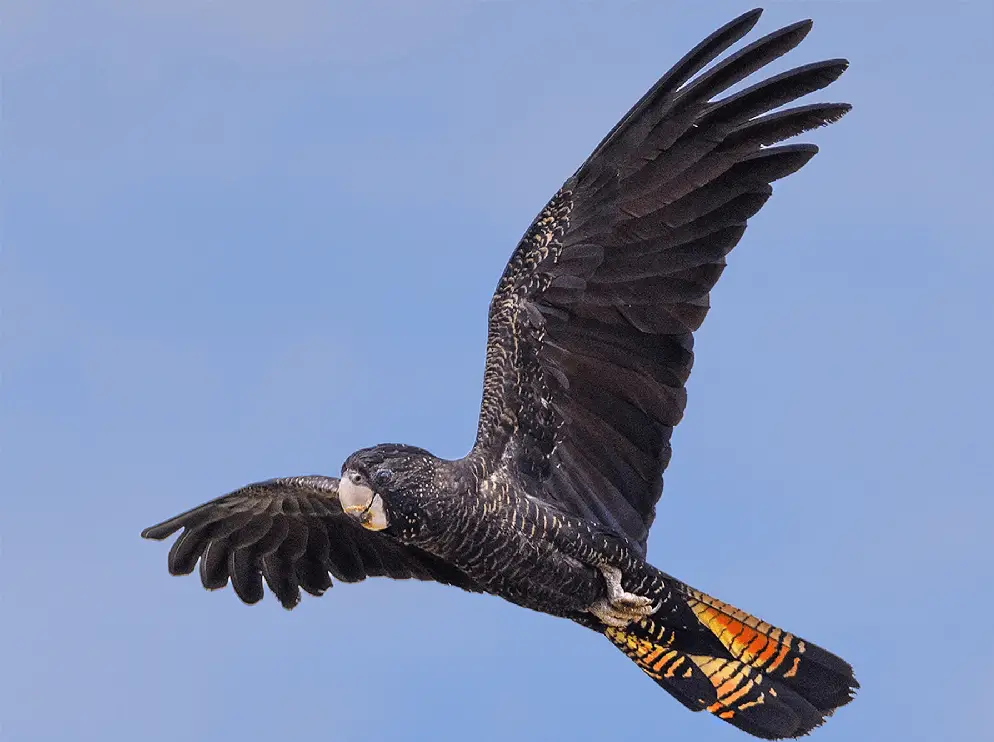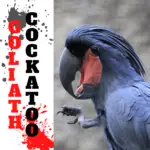
Red tailed black cockatoo price: The acquisition of a NAC often requires authorization. The laws are not the same depending on the species that integrate new pets.
For this reason, before embarking on the adoption of a cockatoo, it is best to find out about the legislation in force. On average,
this species of parrot can cost between €1,000 and €2,000. It is recommended that you only buy individuals that are at least 3 months old and have been socialized.
Calyptorhynchus banksii
- LC Least Concern
- Names (14)
- Subspecies (5)
Identification
50–65 cm; 570–870 g; female smaller. Male uniformly black with a broad red subterminal band across tail except on central two feathers; erectile, backward-sloping crest; bill and feet dark grey. Female brownish-black with numerous yellow spots and shoulders; breast barred yellow;
under tail-coverts barred orange-red; subterminal tail-band yellow-orange barred black, with central two feathers all black; bill bone-colored; feet dark grey.
Immature as an adult female; the male does not attain adult plumage until the fourth year. Nominate race largest; naso has a proportionally large bill, while graptogyne lacks notch in the upper mandible; large billed race macrorhynchus rather similar to, and often confused with, C. lathami.
Systematics History
Editor’s Note: This article requires further editing work to merge existing content into the appropriate Subspecies sections. Please bear with us while this update takes place.
Until recently, the species name was commonly given as C. magnificus, which had several days’ seniority, but that name is invalid as a description based on an illustration of immature female C. lathami. Five subspecies are currently recognized.
Subspecies
SUBSPECIES
Calyptorhynchus banksii banksii Scientific name definitions
Distribution
E Australia (N and E Queensland to NE New South Wales).
SUBSPECIES
Calyptorhynchus banksii macrorhynchus Scientific name definitions
Distribution
NW Australia (Kimberley) and Northern Territory to E Gulf of Carpentaria.
SUBSPECIES
Calyptorhynchus banksii samueli Scientific name definitions
Distribution
inland Australia from CW and SW Western Australia to SW Queensland and New South Wales.
SUBSPECIES
Calyptorhynchus banksii naso Scientific name definitions
Distribution
forests of SW Australia.
SUBSPECIES
Calyptorhynchus banksii graptogyne Scientific name definitions
Distribution
forests of SE South Australia and SW Victoria.
Distribution
Editor’s Note: Additional distribution information for this taxon can be found in the ‘Subspecies’ article above. In the future, we will develop a range-wide distribution article.
Habitat
Nominate race in forests across northern tropical Australia; macrorhynchus occurs in woodland in E Australia; Samueli in semi-arid inland shrubland, and, more recently, in cropland;
naso and graptogyne found in widely separated eucalypt forests of SW and SE Australia, respectively, with latter separated from Samueli by an extensive area of mallee-spinifex.
Movement
Dispersive, with seasonal patterns in some areas in response to the availability of food; regular seasonal movements in N Australia. Parents may travel several kilometers to feed their young.
Diet and Foraging
Nominate race eats a variety of nuts and fruits gathered mainly from trees (Terminalia, Pandanus, Eucalyptus); Samueli feeds much more on the ground, on a variety of burrs and hard seeds, e.g. double-gee (Emex) and Erodium;
naso specializes in using its large strong bill to remove the large seeds from the 2–3 cm woody fruits of marri (Eucalyptus calophylla); graptogyne feeds on the fruits of a variety of forest eucalypts, especially red stringybark (Eucalyptus baxteri).
Sounds and Vocal Behavior
The commonest calls are a low-pitched grating rolling “krrah” and a slightly higher pitched nasal “kee”, which are sometimes given in combination. The alarm call is described as an abrupt “krurr-rak” and the breeding call is a repeated mechanical “waa-waa”.
Breeding
Laying Mar–Oct in different parts of the range. Nests in large, usually vertical hollows lined with woodchips. Clutch single egg (rarely two), size 56·2 mm × 37·4 mm (race macrorhynchus) or 46·2 mm × 36·1 mm (race samueli) ;
incubation 28–32 days, by female, which is fed by male; chick has long, dense yellow down; fledging 10–12 weeks. May breed twice in one year (autumn and spring); can renest after failure.
Conservation Status
Conservation status on BirdlifeLC Least Concern
Not globally threatened. CITES II. Nominate and race samueli
numerous and in no danger. Race macrorhynchus is often confused with C. Latham, and its present status is unclear. Race naso has more restricted distribution; status insufficiently known, but probably vulnerable; currently subject to study.
Race graptogyne also has restricted range; in severe danger through loss of hollows for nesting in, as a consequence of fires, logging and habitat clearing for agriculture, and insufficient regeneration; endangered, with a population of less than 1000 birds with fewer than 100 breeding pairs; currently subject to study.
Protection of breeding hollows from careless burning (naso) and felling for firewood (graptogyne) is essential for future survival of these races.




















